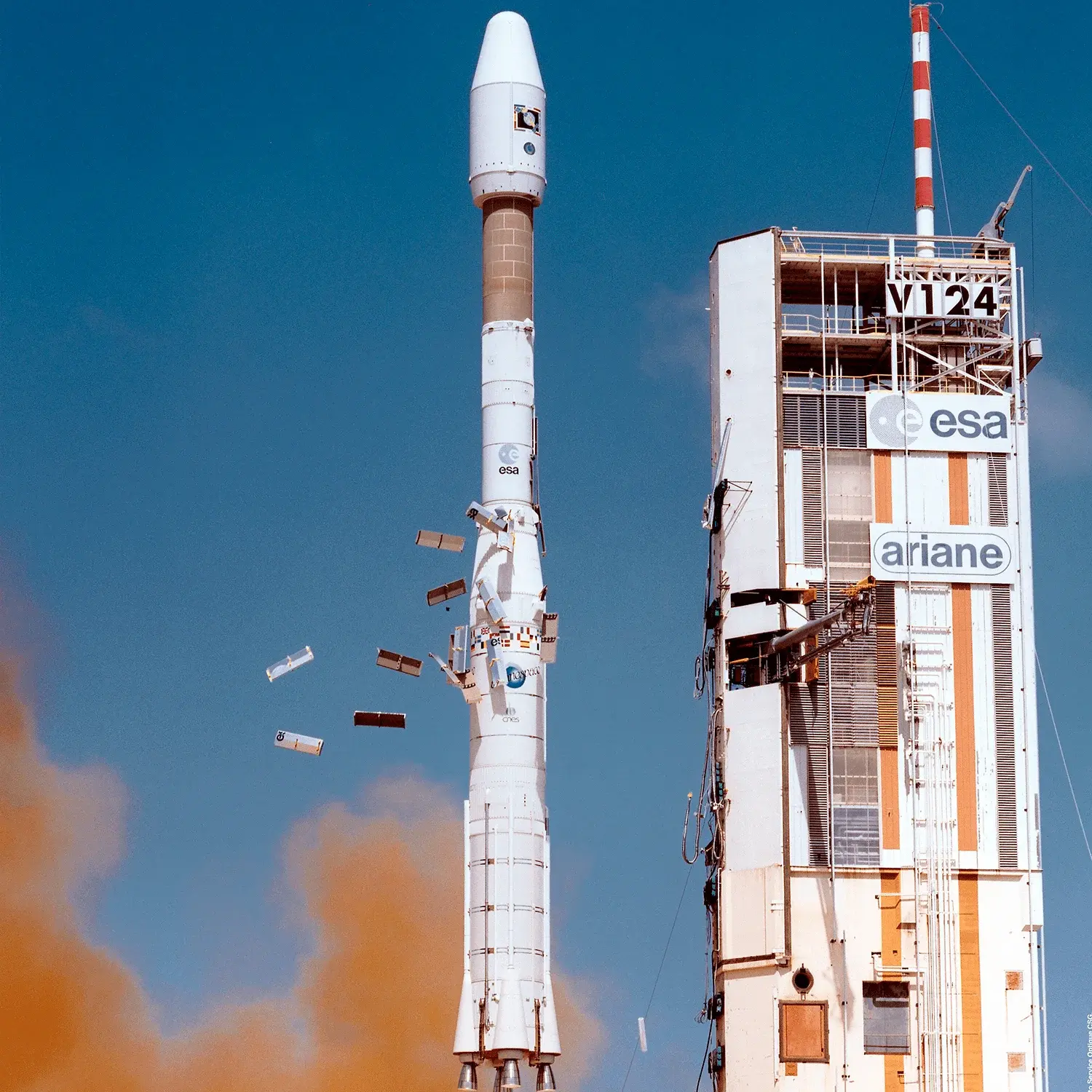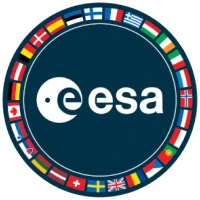SPOT-3, Stella & Rideshares
Launch Success
Liftoff Time (GMT)
01:45:00
Sunday September 26, 1993
Mission Details
Launch Notes
Flight V59. Last flight of Ariane 40 with a classic H10 upper stage.
Stella
Small in size and spherical in shape (24 centimeters in diameter), Stella has a high density. These two characteristics limit the influence of the residual atmosphere on the orbit, which is essentially influenced only by variations in the gravitational field. The satellites are completely passive but they are equipped with 60 cube corner retroreflectors whose role is to return to their origin laser shots from ground stations which are used to accurately determine the orbit followed (measurement of photon travel time) and thus the changes made by the irregularities of the field of gravity
Sun-Synchronous Orbit
1 Payload
47 kilograms
ITAMsat
Itamsat (Italian Amateur Satellite), IO 26 (Italy OSCAR 26) is a microsatellite built by AMSAT IT and has a mission to store and forward amateur radio messages like PACSAT (AO-16) and LUSAT (LO-19). The satellite is based on the AMSAT-NA Microsat bus. It carried a Mode JD (145 to 435 MHz) Digital Transponder using the 1200 bps AX.25 protocol store-and-forward PACSAT Protocol Suite communications system and is mostly identical to PACSAT and LUSAT.
Sun-Synchronous Orbit
1 Payload
11 kilograms
Posat-1
PoSAT-1, the first Portuguese satellite, was launched into orbit on September 26, 1993, on the 59th flight of the Ariane 4 rocket. The launch took place in the Kourou Space Centre, French Guiana. About 20 minutes and 35 seconds after launch, at an altitude of 807 km, PoSAT-1 separated itself from the rocket. The PoSAT-1 weighs about 50 kg and belongs to the class of microsatellites, which are between 10 and 100 kg. The entire project was developed by a consortium of universities and companies in Portugal and was built at the University of Surrey, UK. The total cost was around €5 Million, about €3 Million paid by the Portuguese Government and €2 Million by the Portuguese companies involved (Po-SAT consortium: INETI, EFACEC, ALCATEL, MARCONI, OGMA, IST, UBI, and CEDINTEC). The responsible for the project was Fernando Carvalho Rodrigues, known as the father of the first Portuguese satellite.
Sun-Synchronous Orbit
1 Payload
48 kilograms
SPOT-3
SPOT (French: Satellite Pour l’Observation de la Terre, lit. "Satellite for observation of Earth") is a commercial high-resolution optical imaging Earth observation satellite system operating from space. It is run by Spot Image, based in Toulouse, France. It was initiated by the CNES (Centre national d'études spatiales – the French space agency) in the 1970s and was developed in association with the SSTC (Belgian scientific, technical, and cultural services) and the Swedish National Space Board (SNSB). It has been designed to improve the knowledge and management of the Earth by exploring the Earth's resources, detecting and forecasting phenomena involving climatology and oceanography, and monitoring human activities and natural phenomena. The SPOT system includes a series of satellites and ground control resources for satellite control and programming, image production, and distribution. Earlier satellites were launched using the European Space Agency's Ariane 2, 3, and 4 rockets, while SPOT 6 and SPOT 7 were launched by the Indian PSLV.
Sun-Synchronous Orbit
1 Payload
1,908 kilograms
Kitsat-2
Kitsat-2 (a.k.a. "Uribyol 2", "Kitsat-OSCAR 25", "KO 25" and "KitSAT B") was a South Korean experimental earth observation microsatellite. Kitsat-2 was South Korea's second satellite and was the first to be developed and manufactured domestically by the Korea Advanced Institute of Science. The satellite's mission was to improve and enhance the Kitsat-1 systems, use domestically manufactured components, demonstrate experimental modules, and promote the domestic space industry.
Sun-Synchronous Orbit
1 Payload
48 kilograms
Healthsat-2
Healthsat-2 is a commercial digital Store and Forward satellite for medical communications. It was launched on the 25th of September 1993 and joined HealthSat-1 (UoSAT-3) as the second SSTL microsatellite in the HealthNet global communications system of SatelLife, a U.S. non-profit organization. HealthNet, which is licensed in eighteen countries in Africa and Latin America, is providing desperately needed low-cost' last mile' communication links between medical institutions and health programmes in the developing world. The HealthSat-2 mission was completed from concept to launch within one year. SSTL was responsible for the design, construction test, and in-orbit commissioning of the satellite from its facilities in the Centre for Satellite Engineering at the University of Surrey. SSTL was also responsible for all the programmatic aspects of the mission including procuring the launch slot on the Ariane ASAP and arranging suitable insurance for the launch and early commissioning phase - all within a total contract price of 1M pounds Stirling. HealthSat-2 has been custom-designed to support cost-effective digital Store and Forward communications using low-cost, portable ground stations, and this is reflected in the specifications.
Sun-Synchronous Orbit
1 Payload
42 kilograms
Eyesat-1
Eyesat 1 is an experimental communications microsatellite with a store-dump payload built by Interferometrics Inc. of Chantilly, Virginia. The mission of Eyesat 1 was experimental monitoring of mobile industrial equipment. Eyesat 1 has provided the National Oceanic and Atmospheric Administration (NOAA) with communication services to the South Pole. Additionally, the satellite carried an FM Repeater for AMRAD, a technically oriented, non-profit organization of radio amateurs based in the Virginia suburbs of Washington, D.C., to meet the needs of amateurs for a platform to conduct digital satellite communications experiments. The amateur payload was called AMRAD OSCAR or OSCAR 27. The satellite was based on the AMSAT-NA Microsat platform. Power was supplied by body-mounted solar cells, charging the spacecraft's batteries. Because of the satellite's limited power budget and a desire to maintain sufficient battery capacity for as many years as possible, the amateur transmitter on AO-27 is on for only part of the daylight portion of each orbit.
Sun-Synchronous Orbit
1 Payload
12 kilograms
Launch Site
Stats
Ariane 4
31st
Mission
4th
Mission of 1993
European Space Agency
50th
Mission
4th
Mission of 1993
1993
65th
Orbital launch attempt

